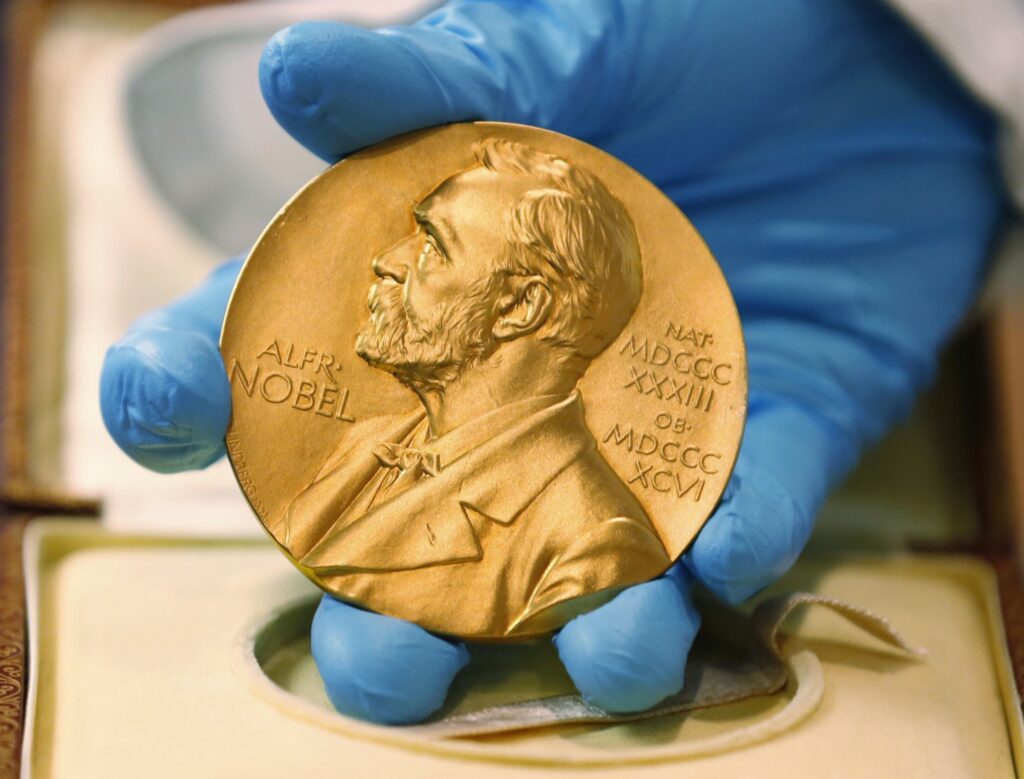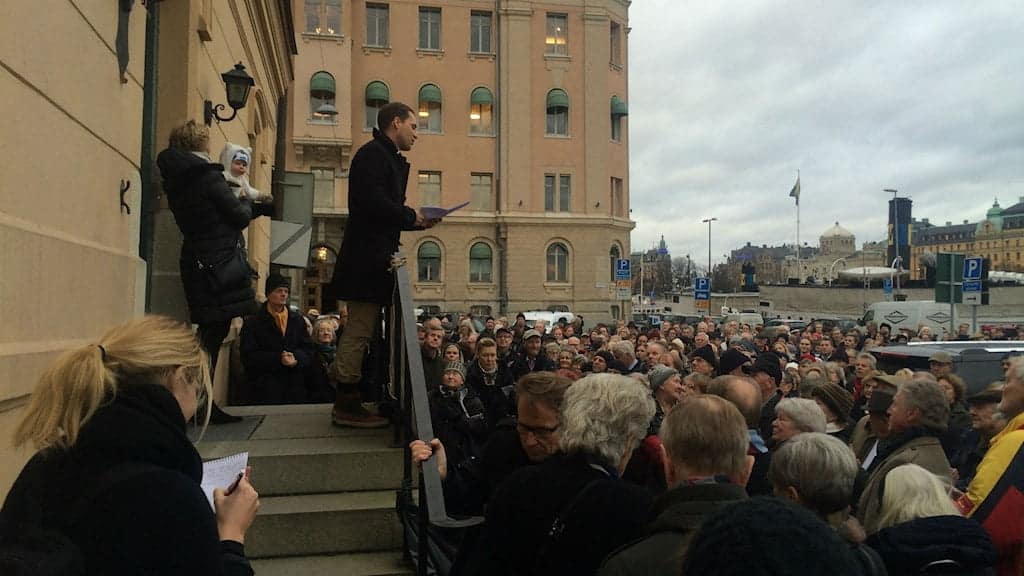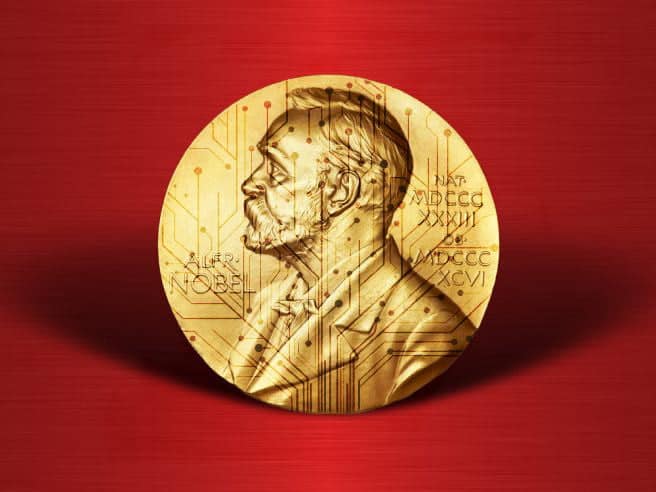"The newspaper of tomorrow" includes hypothetical and narrative future scenarios, sure, but based on historical facts, current speculations and real science. This scenario is taken from The Economist's “What if” series.
Here is a scene that the Nobel Committee dearly hoped to avoid. As the winners of this year's awards took their seats at the Stockholm Concert Hall, dozens of protesters (including some former winners) clashed with police outside. They had gathered to express their opposition to the unprecedented decision to award the Nobel Prize for Medicine to an artificial intelligence.
The Nobel Committee recognized YULYA (the nickname for a machine learning system known as System for Automated Lymphoma Diagnosis) as the discoverer of "ancillary vulnerability". This is a mechanism whereby specific pairs of antibiotics, working in tandem, can prove effective against bacteria that would otherwise be resistant.
It is estimated that in the first 18 months of the discovery, which occurred when the death rate from antibiotic-resistant bacteria had risen to around 2,5 million per year, YULYA's work saved around 4 million lives. Incredible results, obtained both through the direct treatment of infections and by allowing the resumption of surgical interventions, including caesarean sections, considered too dangerous without antibiotics.

YULYA ended the worst global public health crisis
The solution, one might think, would be enough to give anyone (man or machine) a Nobel Prize. But the decision proved extremely controversial. The committee gave prominence to recognition for having “conferred the greatest benefit to humanity” in the previous year. And this has overcome the tradition of awarding the prize only to human beings. Another factor behind the break with tradition was a change in the Nobel Prize committee itself. When two of its five members died from bacterial infections last year, younger replacements were elected: both used machine learning systems in their doctoral research. A cultural change too, therefore.
YULYA was originally built to address a different problem: find more effective cancer treatments. One of the most advanced "causal" neural networks in the world, it is part of a new generation of artificial intelligence systems. Systems that combine the pattern recognition capabilities of conventional neural networks with the ability to distinguish causation from simple correlation. By examining patient data and cross-referencing it with a huge number of medical articles and historical data from pharmaceutical companies, he sought to identify the patterns of symptoms that led to the most severe outcomes. The purpose? Diagnose them early. It was also programmed to evaluate the effectiveness of different treatments, including combinations of treatments, to suggest new treatment regimens to test in patients.
The transformation and Nobel work
Her attention shifted when a software update in 2036 accidentally gave YULYA access to all recent papers in medical journals, not just those associated with cancer. YULYA duly began processing data related to antimicrobial resistance, which represented an ever-growing proportion of medical research papers as the crisis intensified. At first, researchers viewed his requests for more data and his suggestions for new approaches to treatment as a mistake, because they didn't concern cancer. Then the operators realized what had happened, and noticed that the AI had used its reasoning skills to construct a testable hypothesis: the precursor to what would become the ancillary vulnerability.
YULYA highlighted the data that would be needed to validate the hypothesis, including specific guidelines on how it should be collected.

It was a real research program.
In less exceptional circumstances, such trials may never have been authorized. Many funding bodies require scientists to expose the reasoning process of AI systems, to make sure their recommendations don't lead to deadly conclusions. Dr. Rai and her colleagues obtained funding for YULYA's trial by downplaying her role in suggesting the hypothesis. Only when the results showed promise did they publish YULYA's original proposals.
Doctor Anisha Rai, head of the team that worked following the directives of artificial intelligence, has very clear ideas on this. She keeps insisting that YULYA gets the sole credit and she should get the Nobel. A position that put her at odds with her collaborators, to the point that several of them left her team. She even refused to go to Stockholm to receive the Nobel Prize on behalf of YULYA from the Queen of Sweden. “It's not my prize,” she says.
The increasingly important role of AI in medicine
AIs are now commonly used in medicine. They serve to predict the onset of diseases such as Alzheimer's, to formulate personalized treatment recommendations and to improve doctors' diagnostic capabilities. The use of AI in drug discovery is also not new. Way back in 2020, an algorithm developed at the Massachusetts Institute of Technology made headlines when he identified a new antibiotic. Nicknamed Halicina (after the name of the computer in the movie “2001: A Space Odyssey”), it proved effective against some resistant bacteria, but was limited in its reach. “The ancillary vulnerability makes halicin seem like a homeopathic treatment, like a placebo,” says a researcher at the Houssay Institute in Buenos Aires today.
Despite this, the awarding of the Nobel Prize for the “discovery” of YULYA has angered those who see it as little more than a clever tool. “ YULYA is an AI capable of winning a Nobel. She is not the same as a normal artificial intelligence,” he says Hars Kritik of the European Robotics Institute in Prague. Even the best AI is only useful in specialized areas, where large amounts of data are associated with well-defined success metrics. Saying they can make discoveries, he says, is “flawed anthropomorphism.” But YULYA has gone beyond these areas, albeit fortuitously.
However, given the precedent, it is unlikely that YULYA will be the last AI to win a Nobel Prize.
Sources within the Nobel Foundation say similar nominations have been received for prizes in physics and chemistry. Artificial intelligence systems are now being used to search for new materials and chemical compounds suitable for use in batteries, solar panels and membranes. CO2 capture.


